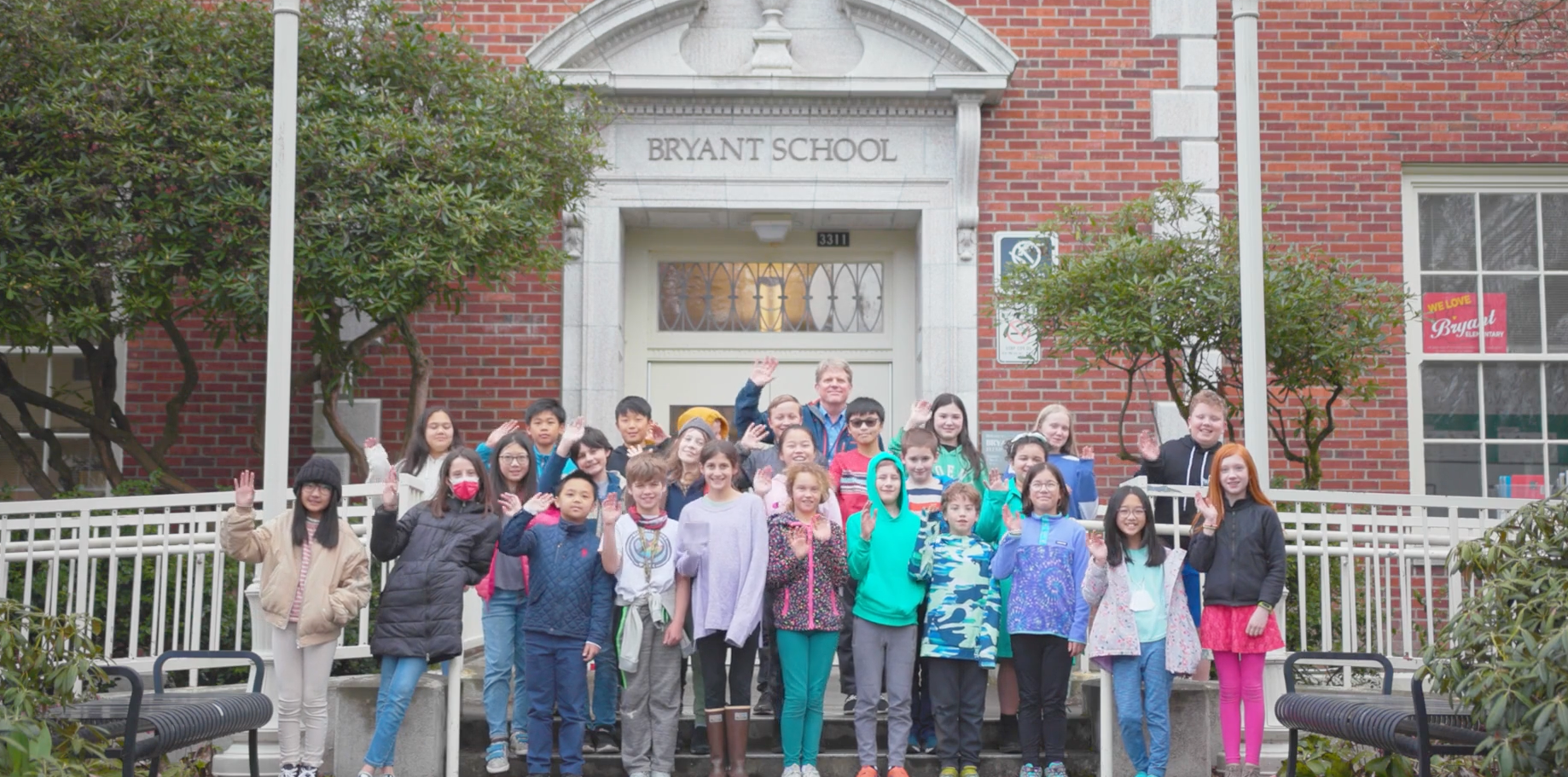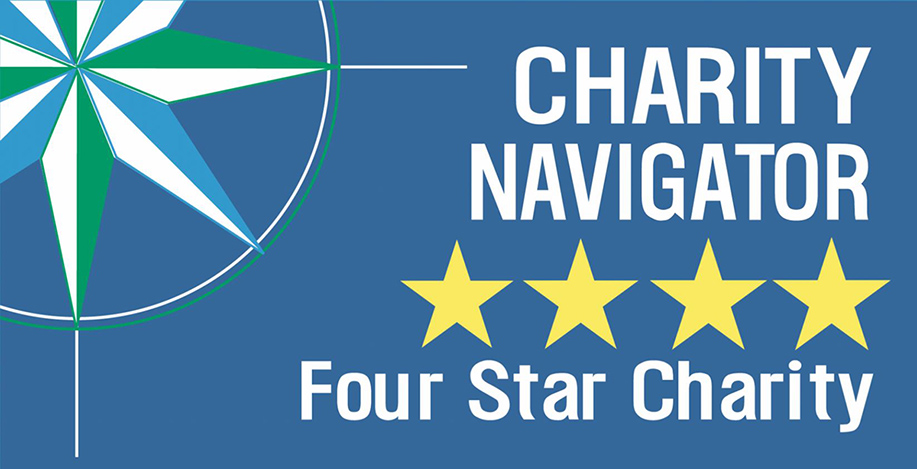Pat O’Rourke served as IslandWood’s Director of Education from 2002 to 2008 creating an indelible…
Celebrating our 20th Anniversary, Featuring Mithun and Dave Goldberg
As we celebrate our 20th anniversary, it feels essential to celebrate and honor the significance of Mithun, and board member, Dave Goldberg in IslandWood’s history. Mithun, a design firm nationally known for creating environmentally sensitive buildings and places, is the company that designed IslandWood’s 250-acre campus, and Dave was the lead designer on the project. The campus has served, for twenty years, as a living laboratory and classroom for thousands of students, educators, event guests, and community members in the region and continues to create the foundation for intentional environmental learning experiences for thousands of people each year. Upon its completion, our Bainbridge campus was one of the first LEED Gold-certified projects in the world and has been an inspiration and international model for sustainable development. Hear from Dave below as he reflects on the design process of what would become IslandWood and on what keeps him engaged over two decades later.

Founder Debbi Brainerd, along with Bert Gregory, review drawings and plans designed by Mithun.
When IslandWood founders Debbi and Paul contacted you and Mithun with this project – how did they describe what they were trying to create?
It’s hard to believe that this was almost 25 years ago, but in the spring of 1998, we received a Request for Qualifications for the master planning and architectural design of a new “Bainbridge Island Environmental Learning Center.” In our first meeting with Debbi and Paul, they shared their goal of creating a “magical” place for kids. I distinctly remember asking Debbi what she meant by “magical”, and she immediately shared what “magical” meant to her — “to inspire a sense of awe for our natural environment for future generations”. They wanted to lead with a strong emotional connection to nature and provide that opportunity at an early age for our youth — something they could take with them their whole lives as adults, community members, and decision-makers. After connecting with students’ hearts, IslandWood (or what originally was the Puget Sound Environmental Learning Center) could then follow with all of the science and hands-on learning as they would be ripe for absorbing it all. Our job at Mithun was to figure out how to create a campus that would support this inspiring mission.

Dave during focus groups where children shared their ideas for what they would most want from an environmental learning center.
You’ve said before that during the design process, Mithun viewed the children who would experience IslandWood as the clients of the project, not necessarily Debbi and Paul. Can you say more about this?
At our first interview for the project, we led with our belief that the kids and the environment were our clients for the project, and that our duty was to team up with the Brainerd’s to serve these “clients” together. This idea clearly resonated with them, and we were able to use this concept to help us make design decisions all the way through. Ranging from big-picture issues like the siting of the buildings to details as small as placements of individual windows and the design of light fixtures. Ideally, every decision we made as a team would help serve IslandWood’s educational goals, protect environmental resources, and create an inspiring sense of place for all visitors to the campus.
One of the key elements of IslandWood is that for everyone who experiences it, whether children, grad students, community members, or event guests, is that it was built specifically to inspire discovery – both self-discovery and environmental discovery. Mithun was tasked with building a place that would innately foster that sense of discovery. What did you, and others at Mithun, discover about yourselves during the process of building IslandWood?
For many of our team members, myself included, the design of IslandWood helped shape not only our design careers and professional development but aspects of our personal lives too. By witnessing the dedication and drive of Debbi Brainerd to help bring Islandwood to fruition, it reinforced the notion that if you believe in something deeply enough and put your full heart and soul into it, the sky’s the limit. And through this process, I think many of us discovered our own potential as leaders.
The design of the campus was such a terrific team effort at Mithun, and with all of the other designers, engineers, and contractors (see below for the full list!)– it really couldn’t have been possible without deep commitments from so many talented and motivated individuals. There are so many obstacles in the way of creating something that’s never been done before. Whether it was innovative water treatment systems, harvesting and milling our own wood from the land, or designing building components in collaboration with artists, we learned that you need to keep pushing and you need to keep trying. We were a young design team but were filled with such great enthusiasm and energy that I think we were able to achieve much more than a more experienced group that would have known all the reasons to say “no.” As I lead projects today, it’s an important reminder not to let our expertise get in the way, and to harness the “beginner’s mind” in all of us.
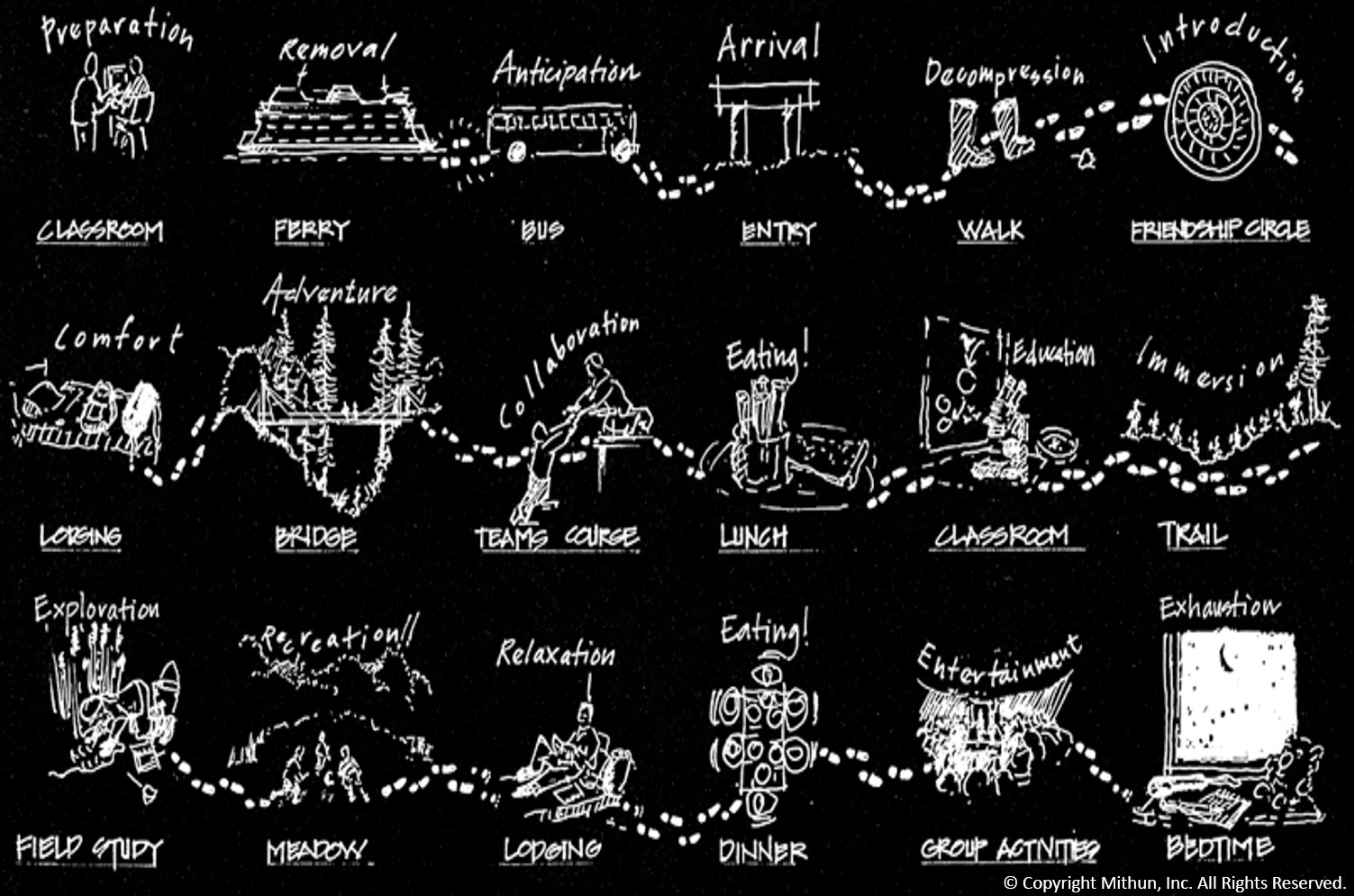
The Mithun team sketched out the imagined day of a child at IslandWood and how they would create the feeling of discovery at each touchpoint. Sketch by Rich Franko of Mithun.
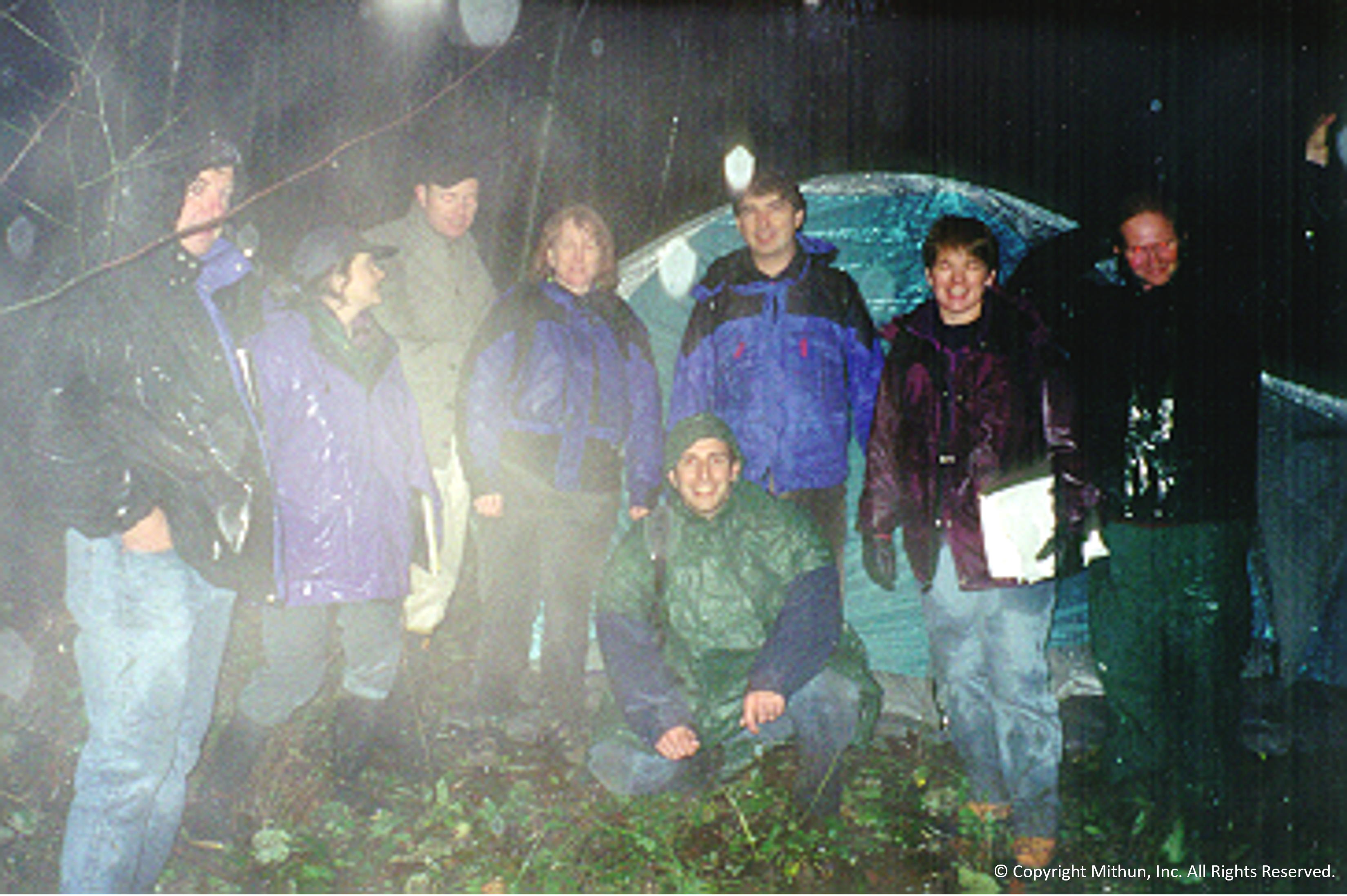
Some of the Mithun team camped out on the site that would become IslandWood as they sought out information that would help inform their future design plans (1998).
Can you talk a bit about the process Mithun went through to ultimately build what would become IslandWood?
We spent a lot of time on the site with our landscape architects, wildlife and wetland biologists, and IslandWood educators. In 1998 we couldn’t navigate the land with our smartphones, so we had maps, compasses, and even some machetes from the local hardware store, to help cut our way through the thick understory – particularly in the areas that had been logged most recently and were full of ivy, fallen debris, and blackberries. Through this process, we were able to identify key environmental and educational features, as well as areas on the site that were most suitable for minimizing the impact of construction. We explored a wide range of options for the overall development plan and ultimately arrived at a plan that only developed a small fraction of the 250-acre property, leaving the rest for trails, small site structures, and a more wilderness-like experience. Having a setting like this so close to a major urban area is a tremendous opportunity and asset that will be cherished for many generations to come.
Mithun built IslandWood two decades ago. What makes you most proud now about what you all created 20 years ago?
It’s wonderful to see how loved this campus still is after over 20 years. While the educational programming at Islandwood has evolved over the years, the buildings and facilities have stood the test of time and still function remarkably well for a wide range of evolving uses. They are well cared for and respected by the school children and other user groups. But by far, the best part is seeing a new group of students engaging with the campus for the first time. The excitement in their voices and in their eyes. That’s timeless, and it’s definitely tops for me.
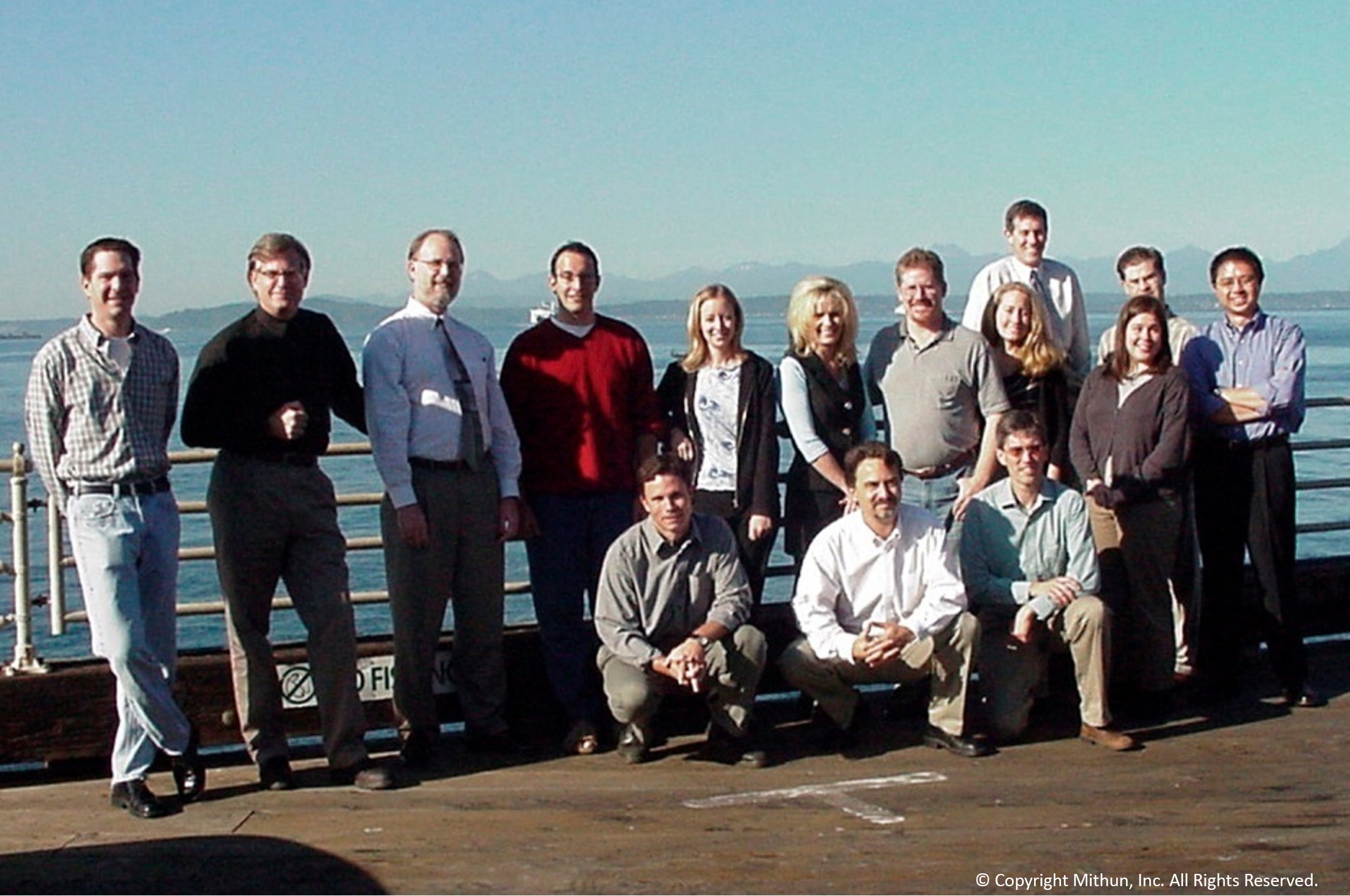
The Mithun IslandWood design team at Pier 56 (2002).
Being extremely intentional is part of IslandWood’s DNA, born first out of Debbi’s vision of creating a very intentional, “magical” experience. Can you tell us about some of the intentional details and aspects of IslandWood that people may not realize were so carefully crafted, but are a key part of the IslandWood experience?
There are so many fun details designed into the campus! Some you can see, like the site-harvested cedar siding that is applied to the building exteriors with random widths to reference the bark of the western red cedar trees where it came from. The educational stone fireplaces that tell the story of the geology of the Cascades, Olympics, and igneous, metamorphic, and sedimentary rocks. And the profiles of endangered salmon species soldered to the bottom of the copper sinks in the dining hall, reminding us that our actions impact other living beings. Some of the other special features are hidden from view, like the cellulose wall insulation made from recycled newspaper, or the low embodied carbon concrete floors and foundations where we were able to reduce the use of cement by 50% vs. a standard concrete mix. Concrete accounts for almost 10% of global greenhouse gas emissions so this is an important hidden detail!
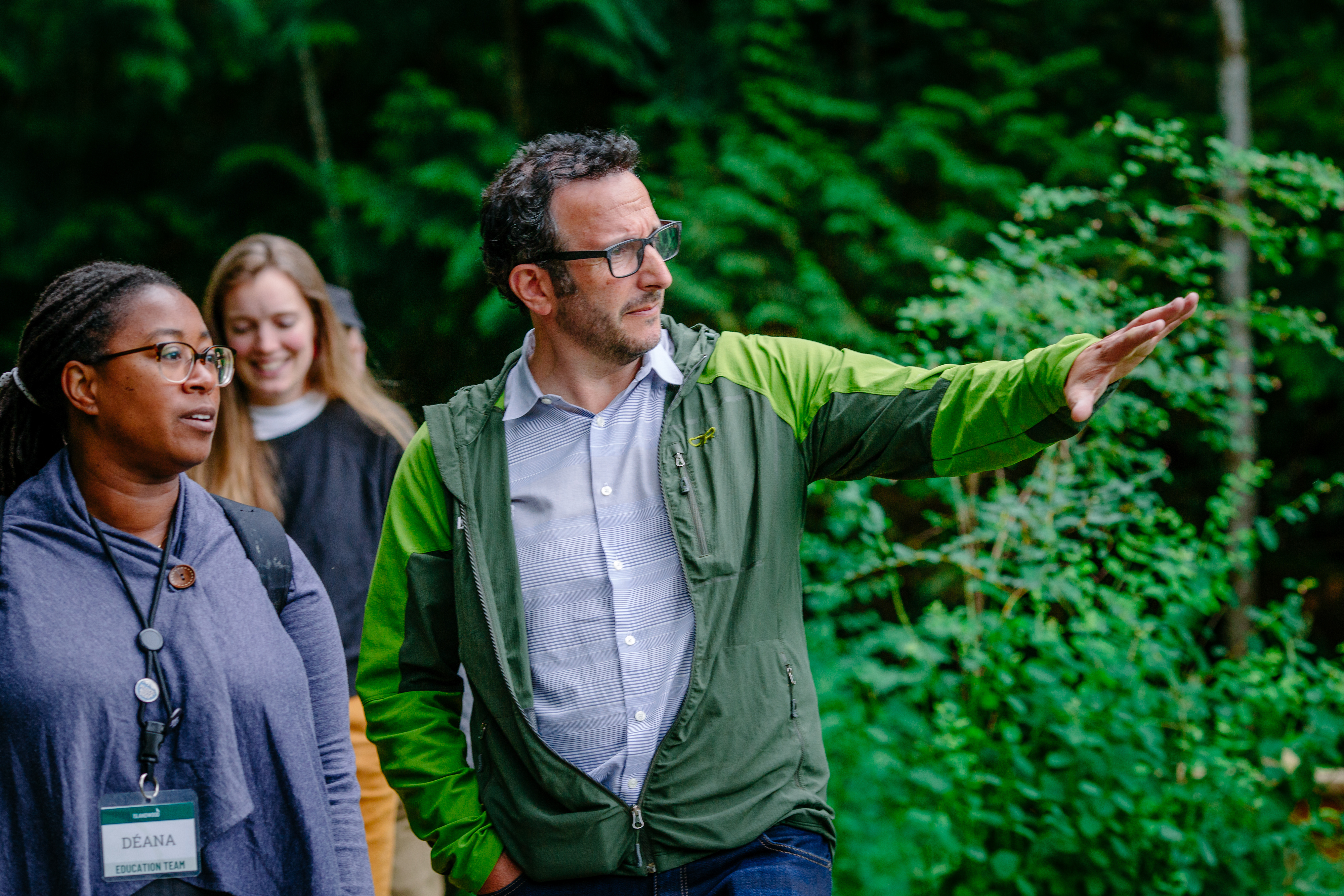
Dave Goldberg, with Dr. Déana Scipio, Director of IslandWood’s Graduate Program, at Mac’s Pond during a Mithun leadership team retreat at IslandWood (2022).
You have been a part of IslandWood for such a long time now – our entire history, essentially – and have also been a board member since 2011. What keeps you personally engaged so many years later?
IslandWood continues to be a special part of my life. It’s really like family to me. IslandWood’s mission is all about the future, it’s about protecting our environment, and inspiring our children. This will always keep me engaged.
Original IslandWood Design Team
- Architect and Lead Designers: Mithun
- Landscape & Site Design: The Berger Partnership
- Master Planning: Bill Isley
- Civil: Browne Engineering
- Structural: SWMB
- Mechanical: Keen Engineering
- Electrical: Cross Engineers
- Alternative Water Systems: 2020 Engineers
- Commissioning: Engineering Economics
- Educational Center & South Site Work: The Rafn Company
- Art Studio & Site Structure: Drury Construction
- Staff Housing & North Site Work: Woodside Construction
- Trails & Site Structures: Sahale LLC
- Treehouse: Treehouse Workshop
If you haven’t already, subscribe to our newsletter to stay in the know about IslandWood news and updates, stories from our programs, and more.


